In this guide, we’ll walk you through how to optimize the light coming from your iPhone.
How to Turn on Night Shift
The first thing every iPhone owner should do is enable Night Shift mode!
So if you haven’t done that yet, here’s how…
Go to “Settings” → “Display & Brightness” → “Night Shift” and then turn on “Schedule“.
I recommend scheduling Night Shift to start about two hours before your bedtime, and to turn off before you usually wake up in the morning.
Make sure to set the “Color Temperature” slider all the way to “More Warm”.
Does Night Shift Block Blue Light?
We own a lab-grade spectrometer, so we decided to see what kind of an impact Night Shift has on the light output from an iPhone 12 Mini at about 8 inches from the screen…
Here’s an actual comparison of the light spectrums before and after using Night Shift:
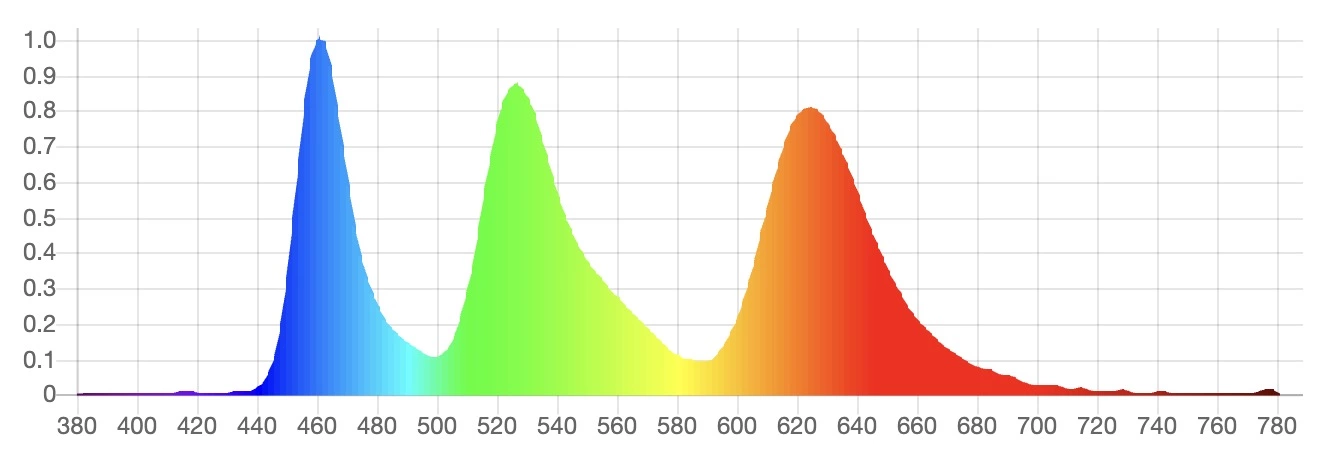
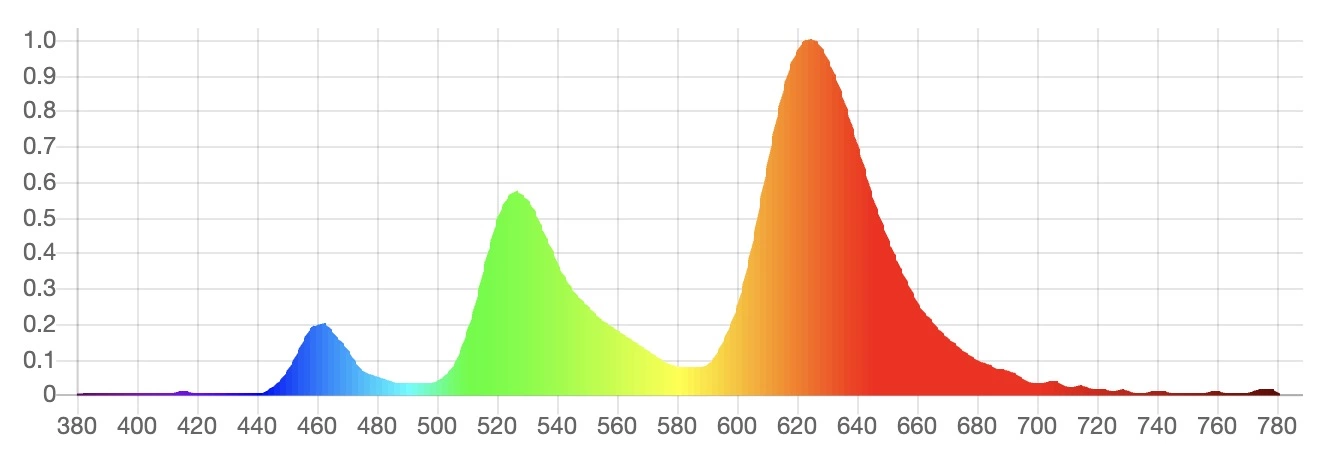
As you can see Night Shift significantly cuts down on blue light and reduces the green a little too!
The total lux dropped from around 37 to 21 which is around a 43% decrease in the “brightness” of the screen.
While the circadian light, which is a weighted algorithmic calculation of the blue and green light capable of suppressing melatonin, dropped by about 70%.
You should definitely have this enabled at night.
However, even with Night Shift mode activated, the iPhone still emits some blue light and quite a bit of green, and for many people, this can still suppress melatonin and promote wakefulness.
This is why you might want to enable the red screen filter!…
How to Turn Your iPhone Screen Red
Go to “Settings” → “Accessibility” → “Display & Text Size” and then click on “Color Filters“.
Now set the Intensity and Hue sliders to the max. This will cause your screen to become very red!
You can turn the color filter off after this, we just needed to set the tint so that when we turn it on in the future it will already be red.
Setting the Color Filter Shortcut
Go to “Settings” → “Accessibility” → “Accessibility Shortcut” and then click on “Color Filters“.
Congratulations! Now you can triple-click your power button to toggle the red light filter on and off as you please.
How Well Does the Color Filter Work?
This is all good and well, but how well does it work?
Here’s a spectral reading of our iPhone with Night shift enabled, before and after enabling the red color filter.


As you can see, all of the blue light has been obliterated, and just about all of the green is gone too!
Here’s a graph of an iPhone’s spectral radiation comparing all three modes:
This is pretty great! Everyone should have this enabled on their iPhone in my opinion.
This brings me to my next suggestion…
Bonus: Automating the iPhone Red Filter!
While you can certainly use the triple-click to turn on and off your red light filter whenever you want, I personally prefer to automate it!
This is useful of course because who wants to remember to enable this every night at a specific time? Feh!
Open the “Shortcuts” app then the “Automation” tab. From here click on “Create Personal Automation“.
Now you have to choose the trigger for your red light filter, either “Time of Day” or “Sleep“.
Time of Day will give you the option to select Sunset or a specific time as the filter trigger.
If you’ve set up sleep mode on your iPhone (which I recommend), Sleep will give you the option to trigger the filter when your wind-down begins. This is the one that I use.
Once you’ve selected one of these, tap on “Add Action“, search “Color filter” and select “Set Color Filter“. It will be set to “On” by default, then hit “Next” on the top right.
Finally, uncheck “Ask Before Running“, and hit “Done“.
Now repeat these steps to create an automation that turns off your red light filter before you usually wake up in the morning!
And bam! You now have a fully circadian-optimized iPhone. I’m so proud of you.
The bonus of making your screen red before you go to bed is that this makes doom-scrolling Instagram and YouTube far less enjoyable which will keep you off of those dopamine soul-sucking apps before bed, which is a good thing!
Another way to block this disruptive screen light would be to use either daytime or evening blue-blocking glasses.



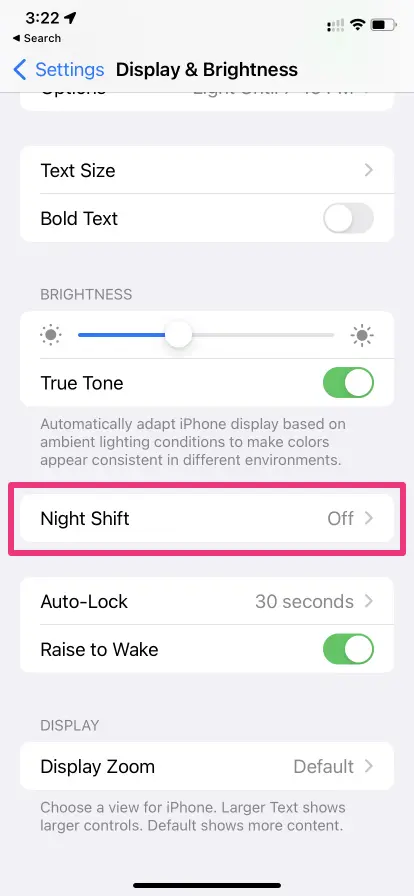













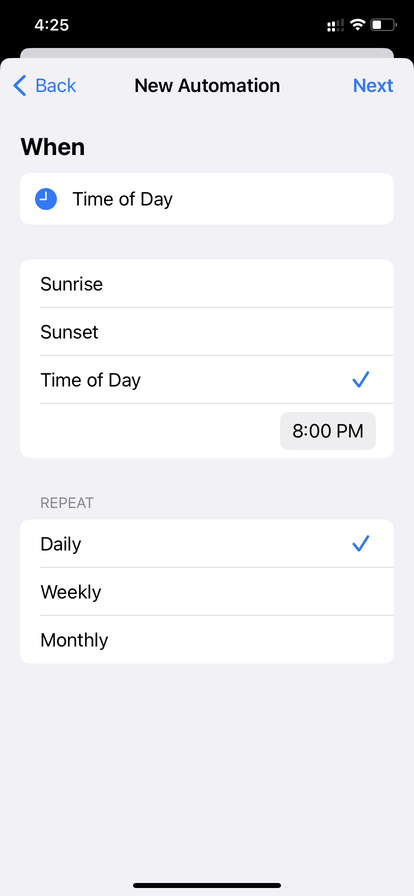







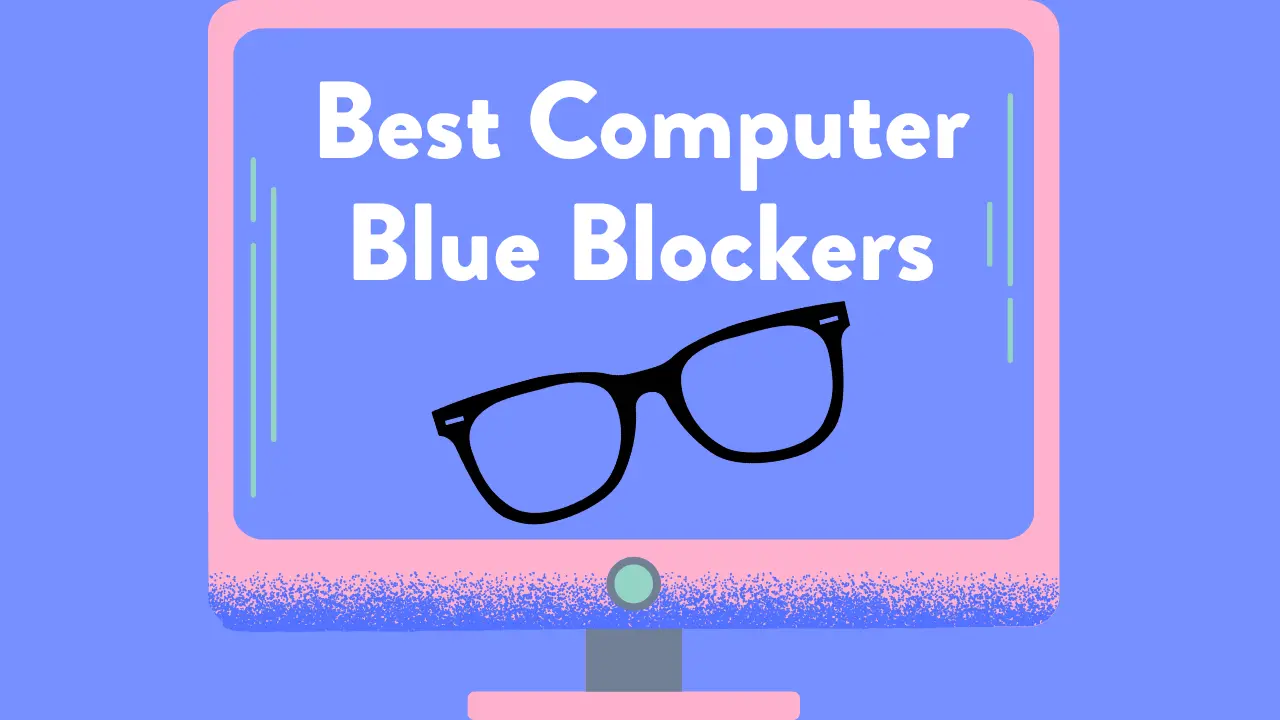
I Derek the article was great and really clear, it helped a lot 🙂 thanks
I am wondering how do you get the spectral from the screen is there any way to get it using a application or you use a external device to measure it? I would like to see if it is possible to measure by myself.
Thanks in advance
Glad you found it helpful! So measuring the actual spectrum from a screen would be quite expensive… the closest you’ll get on a budget is perhaps an Opple meter which should be able to show you lux and color temperature, among a few other things.
Hi Derek, I was reading your article so I could do it on my iPhone, I have been using my iPhone on Night Shift during the day and I never turn it off, I was wondering if this could make any difference during the day for me, or is it something that I am supposed to only turn on at night. I was mainly researching about that because i am not getting a lot of deep sleep at night and was wondering if it has something to do with it. As during the day the blue light helps you to stay more focused, and then at night I should turn on the night shift, and not leave it on 24/7. Let me know what you think.
Hi Leonardo! I leaving your blue blocking filter on during the day probably won’t make any difference, especially if you’re spending time under sufficiently bright light.
I would definitely use it at night! But if you choose to keep it on during the day it won’t make a difference.
Thank you so much! I have an iPhone, and I set the triple click; however, I can’t find color filters in my shortcuts. I try entering it in the search bar, but come up with zero results. Do you know what the problem might be?
Hi Jane! What mode iPhone do you have? I just checked mine and search for “color filters” in settings does bring it up.
Directions for Samsung Galaxy s24?
Unfortunately androids don’t have a feature quite like this. But I hope to do a review of the options available at some point!
Use Samsung’s Bixby routines! It’s dedicated to doing automatios like this, but for anything, including the red color filter.
I’ll have to try that out when I get a chance! Thanks for the tip J.
This is super helpful thank you. Could you check the spectral reading if you turn the hue setting all the way down rather than all the way up?that seems to remove all of the blue light but I can’t tell which is better
Just checked, it’s the same in either direction.